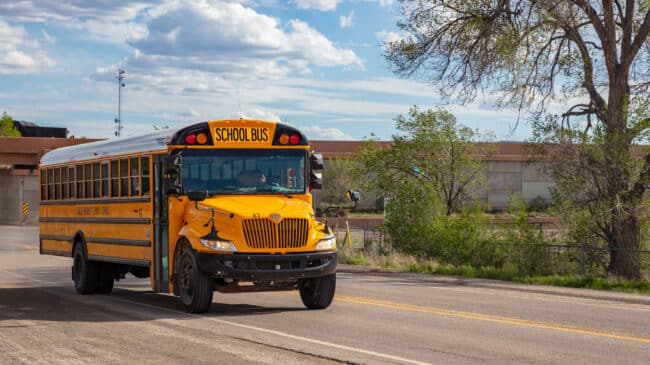Arizona has made several significant improvements to its school funding system recently, but much work remains. Reason Foundation’s updated Arizona K-12 Education Finance Model features the latest school finance data and a new section on the state’s K-12 transportation funding so stakeholders can test how potential reforms would impact school districts and charter schools.
Reason Foundation’s Arizona K-12 Education Model allows users to test changes to the student weights in Arizona’s funding formula, see how changes to local property taxes impact funding, and drill down to see how potential changes affect the funding of individual school districts and charter schools. The model is meant to empower Arizona stakeholders aiming to make the state’s K-12 funding system more efficient, fair, flexible, and modern.
The updated Arizona model features an interactive map of the state’s school districts and charter schools. Using the “Model Inputs” on the lower-left corner of the screen, users can simulate changes to the state’s formula for both charter schools and school districts, including changing the base per-student funding amount and weights for special education students. Users can also turn off and on various local revenue sources to see the financial importance of those local levies for school operations and bonds.
In the “District-to-Charter Formula” view, users can also evaluate which school districts would receive higher funding if they could opt out of using local property taxes outside of the formula in exchange for increased state funding.
Finally, users can also explore replacing Arizona’s current transportation funding formula with a flat, per-student amount for transportation that would give districts more flexibility in how they provide transportation services.
All results are shown in both total funding and per-student funding terms. The model also includes summary results and figures displaying how many school districts and charter schools would see increases and decreases in funding under any simulated changes that users test. The model excludes federal funds and state grants outside the main K-12 education funding formula.
Notably, the model accounts for recent changes to Arizona’s K-12 finance system. Through two major budget bills in the summer of 2022, Arizona legislators updated K-12 funding in ways that have implications for future reforms. Some of the key changes include:
- State leaders increased the per-student amount in the state funding formula to $4,775.27;
- Increases to both charter additional assistance (CAA) and school district additional assistance (DAA) by $55 per student on average;
- Significant increases to the “other health impairment” special education funding weight to 0.292;
- A new weight for low-income students;
- Eliminating additional teacher compensation funding.
Despite these changes and others, the updated Arizona Education Finance Model shows that unfair funding patterns persist—primarily because Arizona school districts vary dramatically in how much additional funding they can raise from local property taxes.
For example, these property tax disparities help explain why Sunnyside Unified District receives $7,879 per student from the state formula and its local tax sources, while Blue Ridge Unified gets over $3,000 more per student — $10,925 per student.
One telling indicator of the differences in school districts’ ability to rely on additional local levies is shown in the “District-to-Charter Formula” view. Without making any adjustments in the “Model Inputs,” the model shows in this window that 66 school districts would receive higher funding if funded under the charter school formula because these 66 districts raise little to no money from additional local levies. Thus, switching to the charter school funding formula would mean giving up their ability to impose additional levies in exchange for higher additional assistance funding (CAA). This insight is helpful for policymakers hoping to close the per-student funding gaps between school districts because it illustrates that while some Arizona school districts can reliably raise additional local levy revenues for bonds and operations, many others can’t.
Another variable that is driving funding disparities between districts is the transportation revenue control limit (TRCL), which allows school districts to raise additional transportation funds locally based on outdated enrollment figures.
Turning off TRCL funding in the “Model Inputs” shows how each district would be affected if their transportation funding was solely based on current-year calculations. For many of Arizona’s small school districts benefiting from this hold-harmless provision, turning off TRCL would substantially reduce their education funding. One example is Vernon Elementary School District, which has just over 100 students. If TRCL were removed, Vernon would see a 20.9% reduction in revenues.
Findings like this highlight the usefulness of the Arizona Education Finance Model in determining how programs like TRCL can be phased out and which districts would be most affected.
Reason’s updated Arizona Education Finance Model can help researchers and state leaders identify a vision for future school finance reforms. It assists policymakers in prioritizing reforms such as phasing out TRCL funding, generating cost estimates of future formula changes, giving districts more flexibility over transportation, and closing funding gaps for school districts that can’t rely on additional local levies. The model helps illustrate how state leaders can make every dollar count for students.

